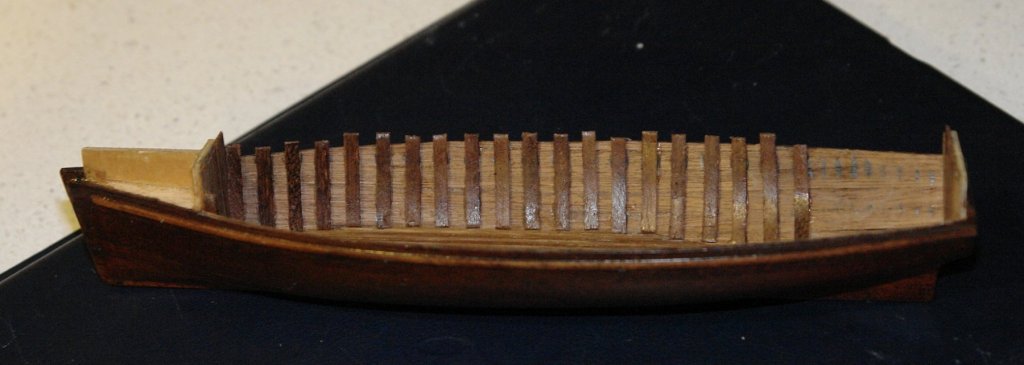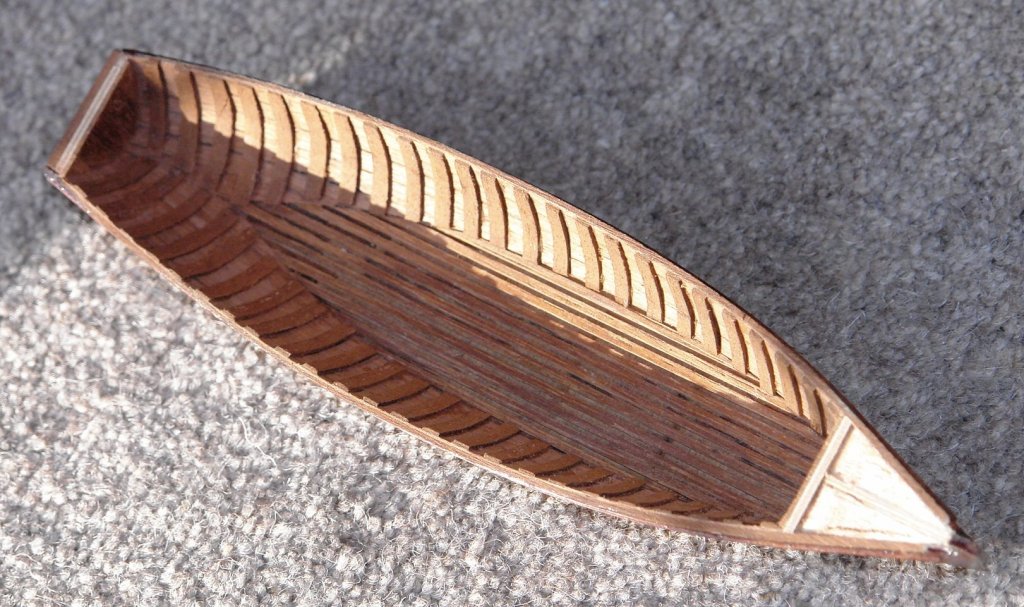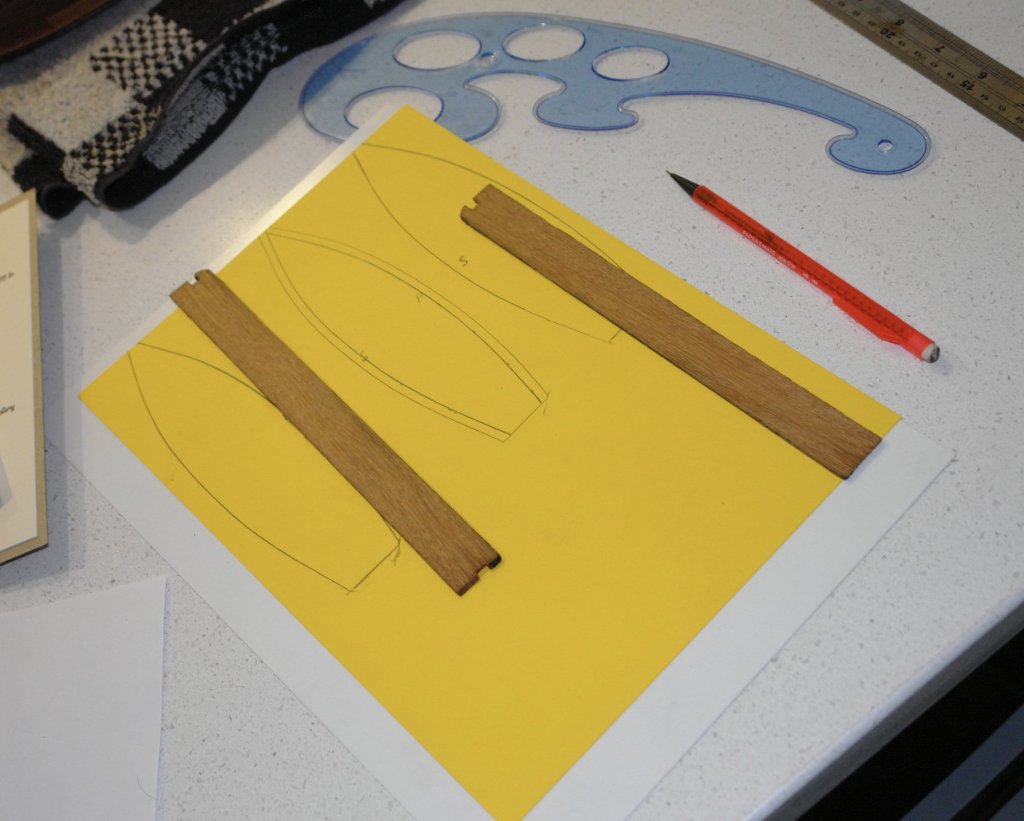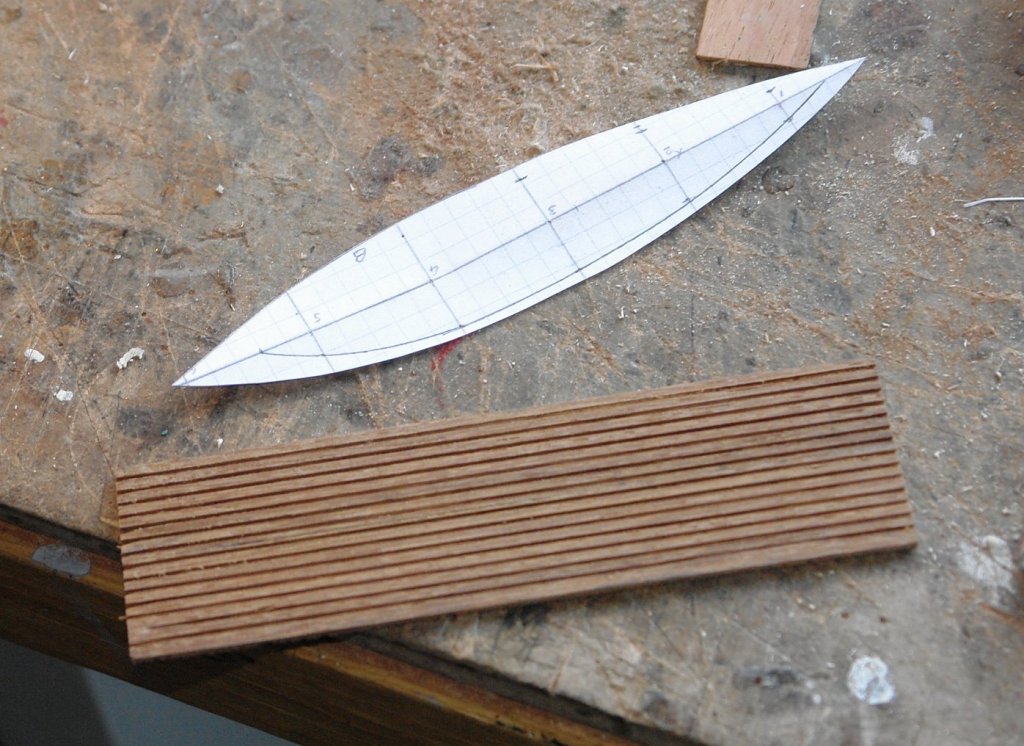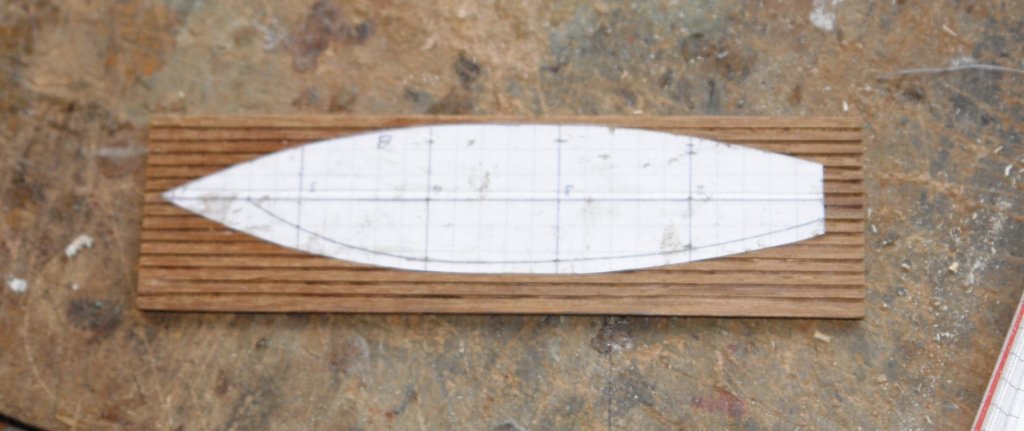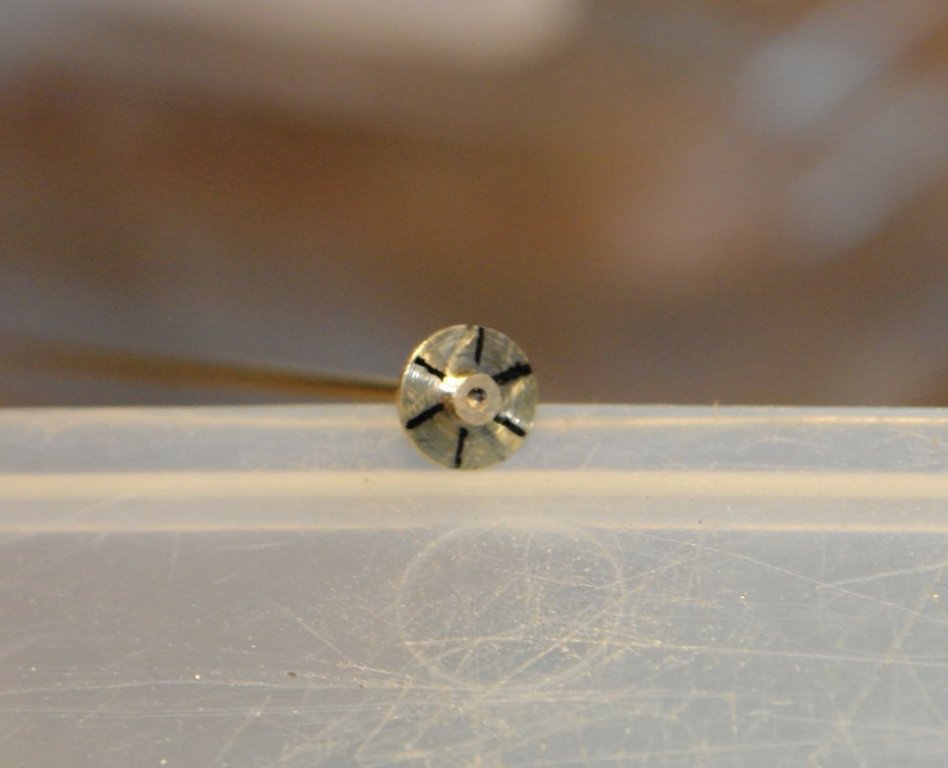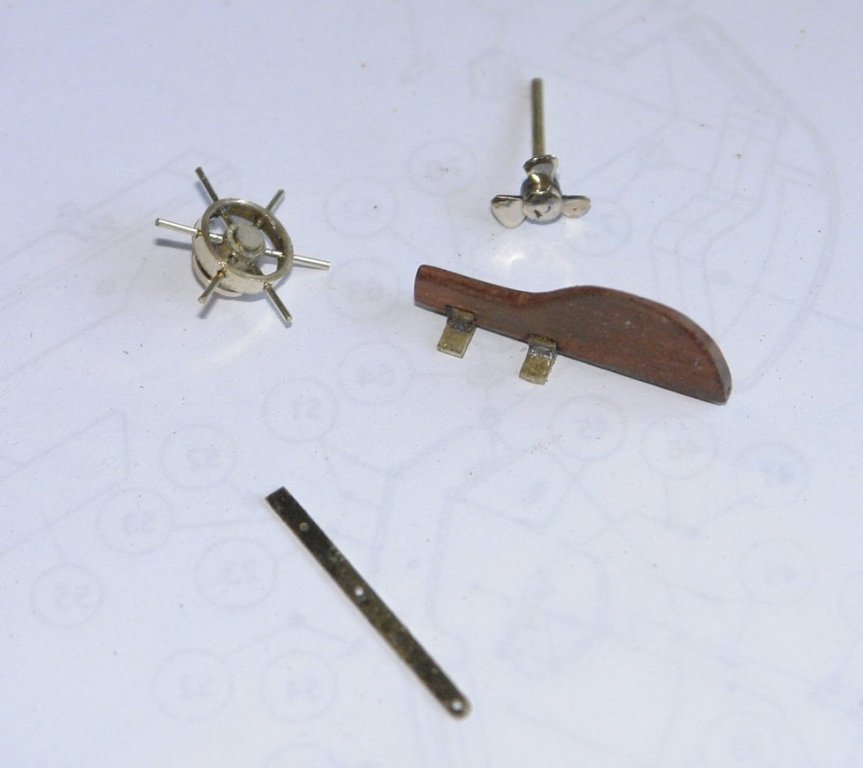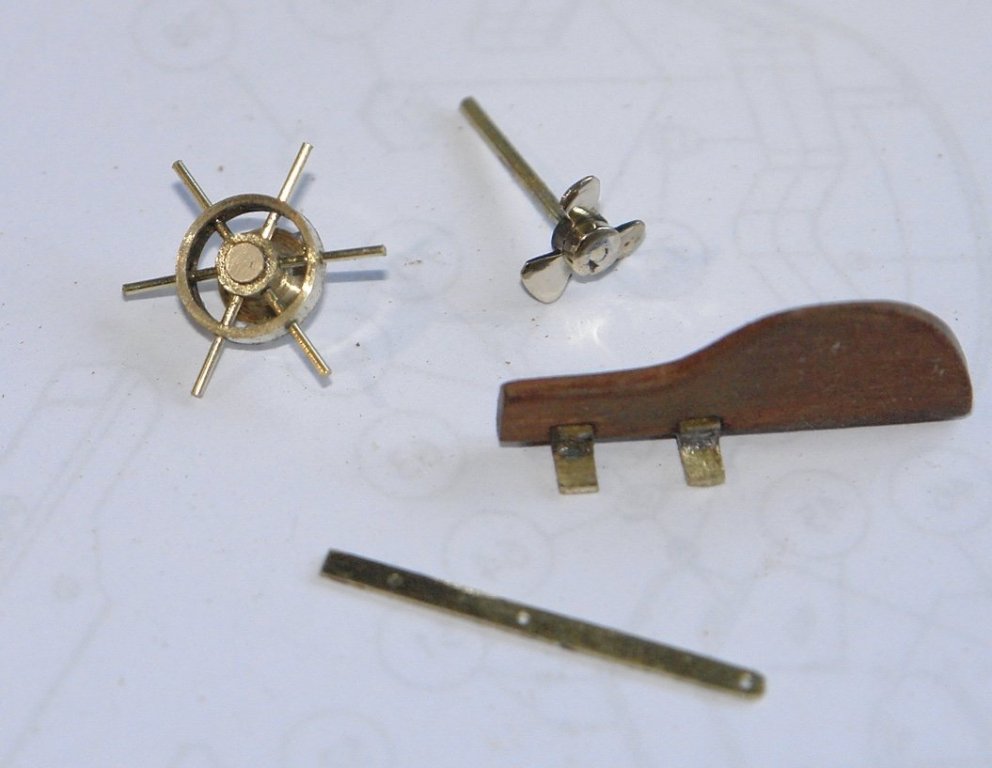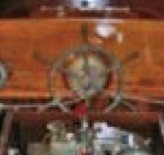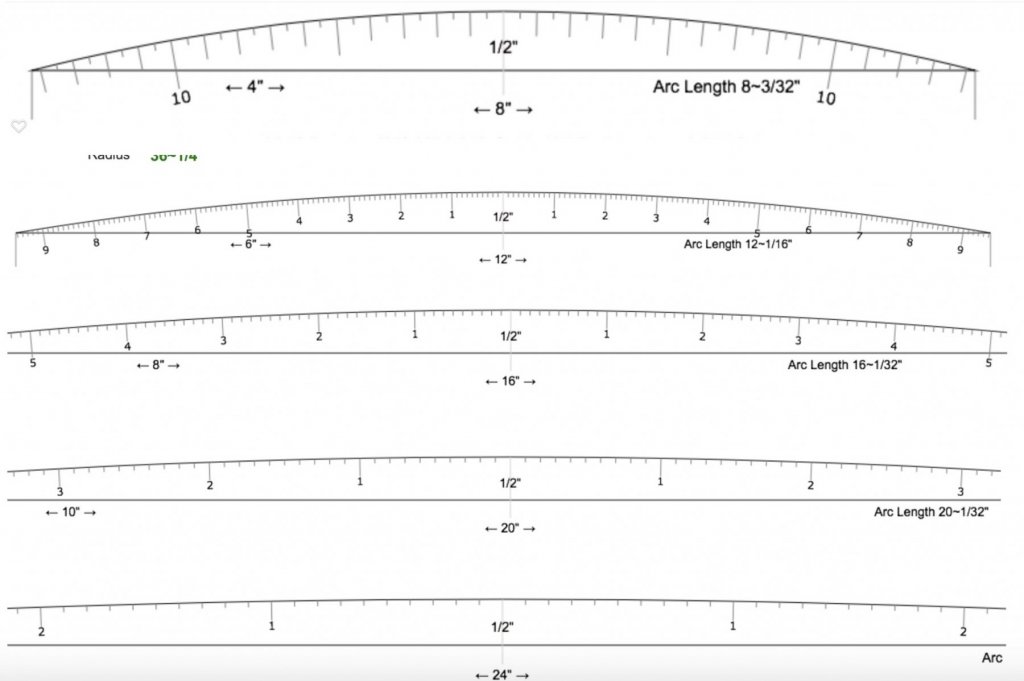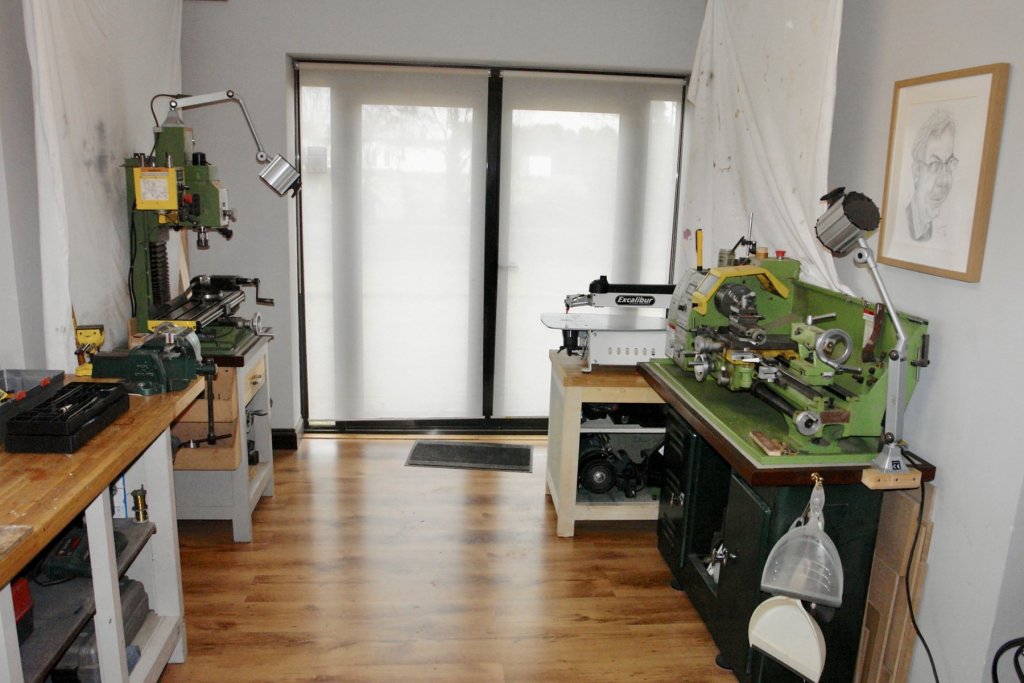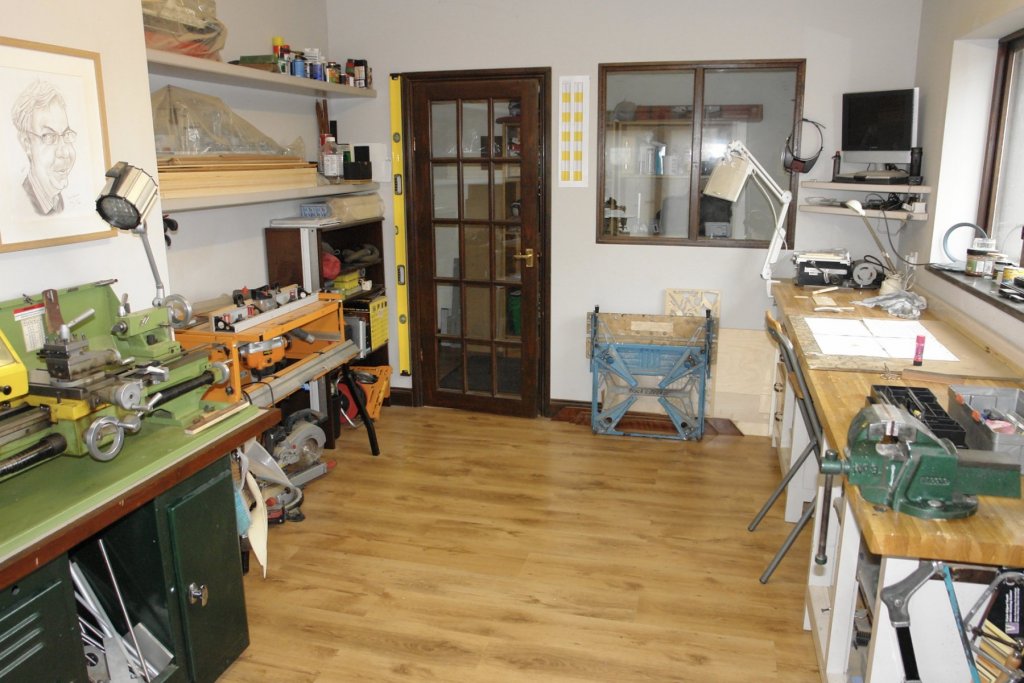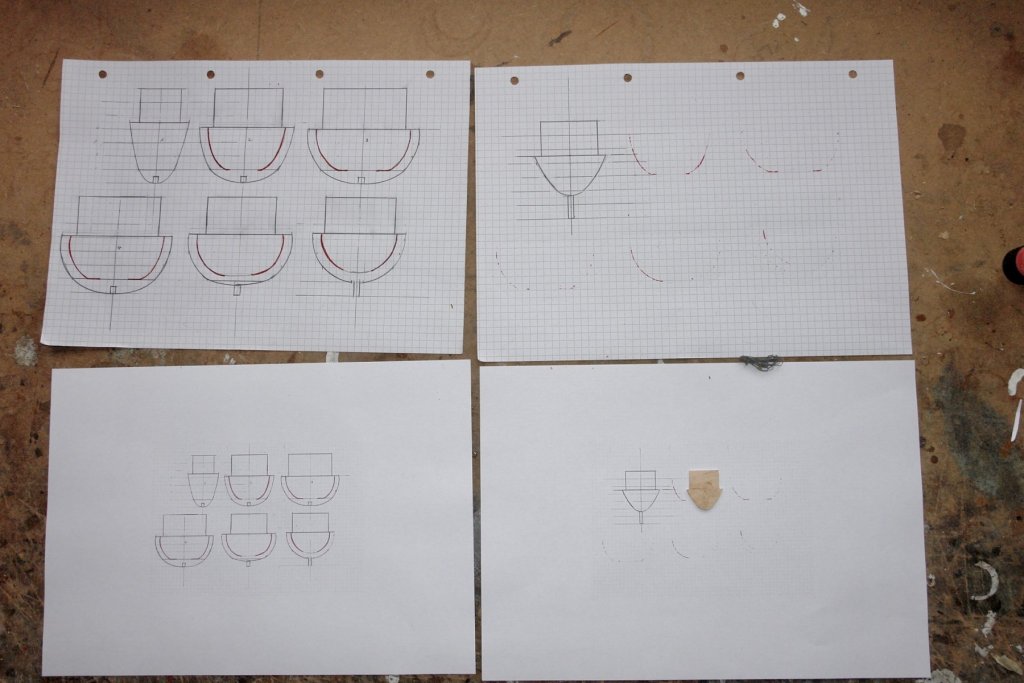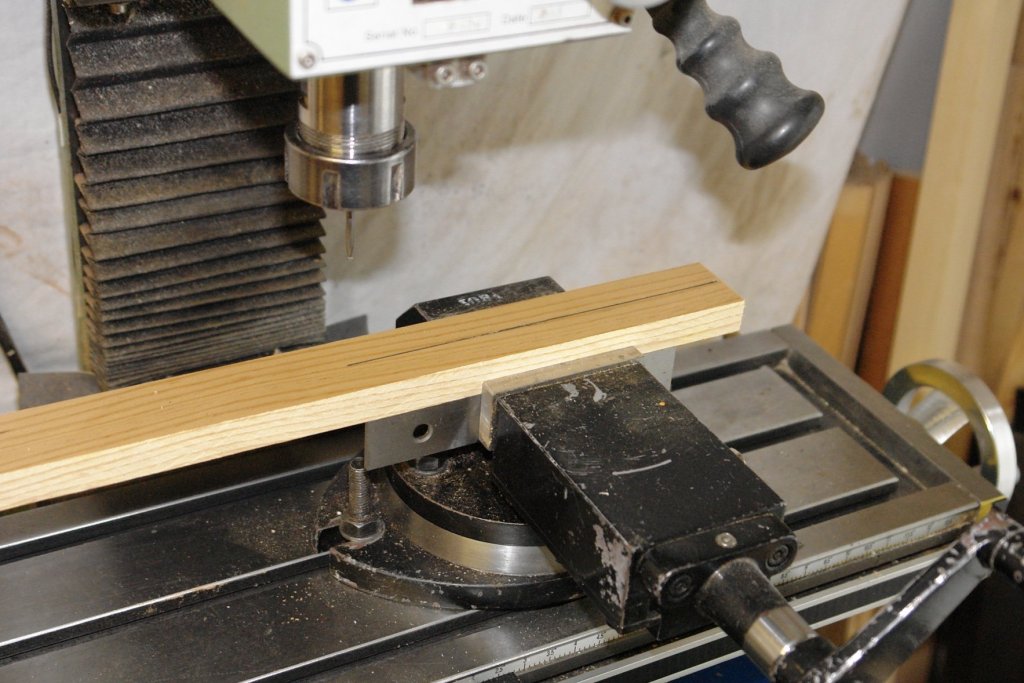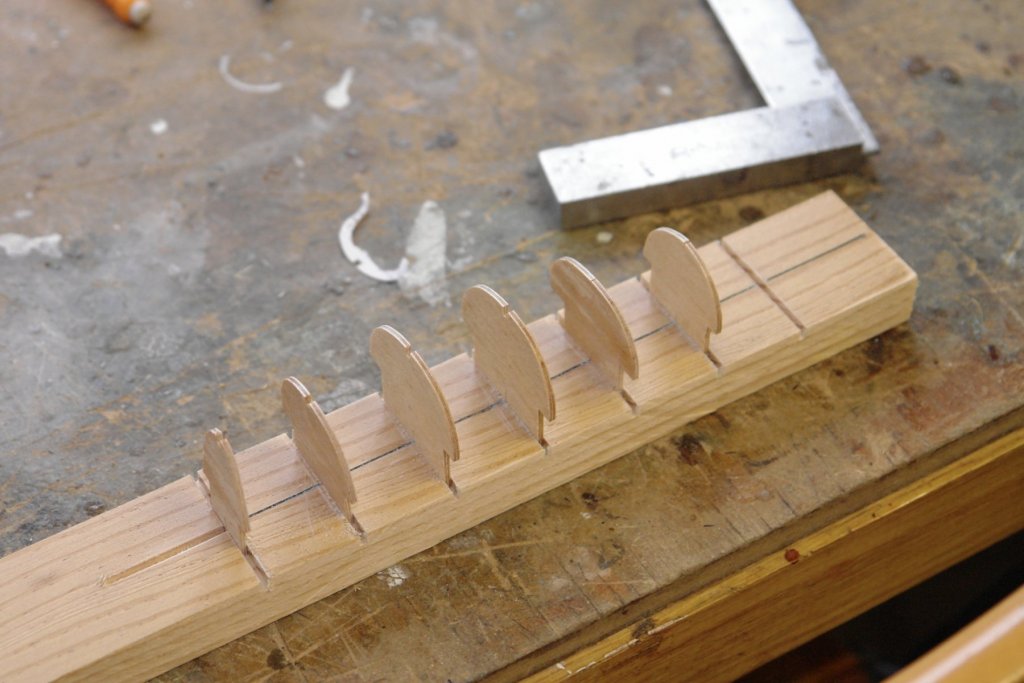-
Posts
3,946 -
Joined
-
Last visited
Content Type
Profiles
Forums
Gallery
Events
Everything posted by KeithAug
-
Amazing Dan, but it strains my eyes and hurts my head. May need to get my eyes sorted.
- 287 replies
-
- michelangelo
- ocean liner
-
(and 1 more)
Tagged with:
-
She is looking very good Nils. The final few photo's show her off a treat.
- 692 replies
-
- eagle of algier
- chebec
-
(and 2 more)
Tagged with:
-
Christmas and New Year over and I am delighted to announce that the management has graciously agreed to the reopening of the shipyard. Pat / Bedford - Thank you for your contributions. Mark - Your light sabre is obviously very clever, my skill with manufacturing automation relegates me to the 3rd division, more of a latter day Zorro than Luke Skywalker. Paul - Thank you for taking the trouble to browse my log. I continued this week with the building of the launch. I completed the planking of the the inside of the hull and then marked out the position of the ribs before attaching them. I needed some quite tight bends but I managed them without too much trouble / breakage. Two bench seats run along the sides from amidships to the stern. I shaped these using the previously drawn hull lines. They are currently glued in place but I think I will add more supports for aesthetic / realism reasons. I spent last night awake making and fixing the capping rails in my head. Not very productive I would have been better occupied getting up and doing the job. Anyway the plan involved cutting the rails to shape using the inverted hull as a template. By about 3am I had rejected the alternative plan of bending straight planks to fit. My plan for clamping the rail while the PVA dried was effective if not a little basic. It involved holding it in place with finger pressure while blasting it with the hairdryer. My fingers got a little warm in the process but I gritted my teeth an toughed it out like a man. The next job is to plank the small section of foredeck before getting on with the internal fit out.
-
Hello Pat. Thank you for taking time to look through the entire log and for your kind comments. I am thinking of putting a miniature letter/envelope in the drawer explaining who I am ----- a time capsule for future generations of shipwrights. If my explanation has failed at any point please let me know and I will fill in the detail.
-

ancre La Salamandre by tadheus - 1:24
KeithAug replied to tadheus's topic in - Build logs for subjects built 1751 - 1800
Very nice hatch Pawel. -
Pat, thank you for visiting and for your positive comments. I hope you enjoy reading the rest of the log. Update:- I have not had much time over the last few days but did get a bit done I cut the launch off the building frame. I had not waxed the frames to make detachment easy. Also I had purposely glued the planks on to the central frame as felt this would retain the planks in the correct position. Never the less the non-glued frames came away easily with a simple twist. The central frame was nibbled away with a pair of side cutters assisted by a small circular saw attached to the craft drill. It proved a fairly simple task. As previously explained I have little information on the launch but this is giving me a degree of freedom to innovate. I decided I wanted a flat slatted deck so I grooved a thin piece of mahogany and shaped it using the lowest horizontal hull section. Having glued the deck in place I decided that I would get a better internal finish by interior planking before simulating the ribs. I have not finished the internal planking because I got a bit distracted with a few fittings - the wheel, screw, rudder/brackets and the strap that runs from the keel to the bottom of the rudder. The screw was turned as a disc and then shaped with piercing saw / needle file. The blades were twisted with pliers. The screw about 0.3" external diameter. The wheel was made as a hoop and boss connected by 6 wire spokes For comparison purposes here is the rather poor picture I have of the real wheel. I hope to get back to building some time over the weekend.
-

Tools for Masts and Spars
KeithAug replied to JRB9019's topic in Modeling tools and Workshop Equipment
John - Have a look here for tool advice:- http://modelshipworldforum.com/ship-model-materials-and-tools.php Most good model shops carry a range of tools - In the UK I find this outfit to be a good supplier:- http://www.cornwallmodelboats.co.uk/acatalog/tools.html. I also use https://www.chronos.ltd.uk and find they give excellent service. Also this link gives an idea of the sort of tools others are using to make masts / yards:- http://modelshipworldforum.com/ship-model-masts-and-yards.php -
Jon - I over bent the planks i.e. to a radius slightly smaller than I actually required. I applied PVA glue to the abutment edge with an artists paint brush before offering the plank up and clamping it in the middle. Clamping in the middle caused the bend to open up to a slightly larger radius and at the same time caused the ends to press against the frames due to the spring in the plank. I then applied other camps to lock the plank in position while the glue cured. The season assisted the glueing because we have a wood burning stove which roars away all day. It stands on legs with a 5 inch gap below it. The hull was placed in this gap to cure the glue as each plank was laid. The curing time was about 30 minutes. Good luck. Pawel - thank you. And thank you to everyone else who has viewed my log.
-
I seem to have missed a few posts - my build seem to have descended into a mess of puddings. Thank you all for your contributions - I will try to answer the points raised. Jon - good luck with trying the plank method - the following post will show how it turned out. John - my wife makes her own pudding to a recipe passed down from her ancestors (served with brandy butter). Best not to dwell on what goes into the pudding but it tastes wonderful. The heat gun I am using was bought cheaply off Amazon (sold for hobby use). I am using it directly on the wood without any wetting. Per - agreed the hot air gun is a great tool. So to continue. I continued planking down the hull until I got to the position in the next photo, I then attached the garboard planks - leaving a gap of just under 2 plank widths to fill. Both the fill planks had to be individually shaped - on the bench sander and then by hand sanding. I then cut down the keel to finished size and sanded the hull to remove imperfections. The profile of the back of the keel was cut to take the screw. I then did some final sanding with 400 grit wet and dry (used dry). Rubbing strips were cut to add to the hull (.040" x .040" section). Finally the launch got its first coat of poly. I'm pleased with the shape given my starting point was some improvised and hand drawn sections.
-
Thank you Michael. I hope you are recovered enough to enjoy Christmas dinner. The pudding is already resting very heavily in the stomach over here and I never want to see another Brussel sprout. Thank you to all who have hit the like button and for those of you about to sit down to your meal my advice is "beware of the Christmas pudding".
-
Nice progress John. Loved the detail - especially the bailer. Sorry no I have no relevant knowledge to help your deliberations.
-
Thank you Dan - I think I have seen others use the magnet trick. Thank you Tom. Thanks to everyone for all the likes. So to continue with the launch (the guests are proving less disruptive than expected). I put the former for the bow in place and installed and shaped the bow filler blocks. The former was then edged with mahogany to form the continuation of the keel and the stem. The 2 parallel upper hull planks were then installed. The keel / stem have yet to be cut down to their finished size. I adopted a novel (simplified) method of making the remaining planks. Rather than individually shaping planks I went for the mass production approach. I measured the required length at the waist and stern and then used the ratio to determine how much wider the planks needed to be at the waist. I then downloaded a series of arc profiles from the web and printed them out. I cut the raw stock for the shaped planks - a piece of mahogany 7"x 0.75" x 0.125". I then selected an arc that gave me the desired waist and edge thicknesses on the 7" x .125" edge. I then used double sided tape to paste the arc on to the edge. I then sanded away the edge to form the required plank shape. The sanding was done on the disc sander, employing a "V" block to keep the plank vertical while shaping. Identical .040" width planks were then slit off on the Byrnes saw. The planks were bent using heat from a hot air gun - a very effective process that I will use in future - no more messing around with steam or hot water for me. Planking of the hull then progressed. Sometimes with many clamps and elastic bands. So far (half way) its woking out well (nice water tight joints). This is definitely my last pre Christmas post. I'm looking forward to what Santa might bring. HAPPY CHRISTMAS to you all.
-

Stevenson's ER32 Collet Blocks
KeithAug replied to KeithAug's topic in Modeling tools and Workshop Equipment
John, You need to think about getting something with a decent sized hole through it to take longer stock. Not all round collet holders have a decent bore. The ER collet blocks work fine in the lathe chuck if you are wanting to quickly mount something that isn't going to damage a finished surface of softer bar stock such as aluminium or brass (the 3 jaw chuck can damage these quite easily). If you don't want to go through the bother of dismounting and remounting the chuck then the collet blocks are a quick and easy solution and do have a decent bore. It isn't as accurate as a collet chuck but I checked my set up and can get concentricity of better than .002" which is good enough for most of what I do. I do have a collet chuck which I use for more accurate work. If you need smaller then you can get ER25 versions. -
John. Don't mention the cricket, or rugby league for that matter. Much better to mention Rugby Union. Have a happy Christmas.
-
Michael - hope you are better for Christmas day - its miserable when you can't ask for more pudding.
- 749 replies
-
- albertic
- ocean liner
-
(and 2 more)
Tagged with:
-
Sometimes when I am about to start a new element I find myself getting frustrated with the state of the workshop. This happened on Sunday so I spent the day tidying up. That done I was forced to make a start on the launch. I redrew the sections at twice scale to get them as well defined as possible. I then reduced them to scale size on the printer. The launch is about 7 inches long and 1.6 inches wide. I made a test section to have a little practice on the scroll saw - bottom left quadrant. The sections are just formers and will be removed once the hull is planked. I then made the base board on the mill - the slots are .080" i.e. the thickness of the ply sections. I found cutting the sections on the scroll saw quite challenging. It took a great deal of concentration to keep the cut on the line. This was predominantly because the cut line looked almost identical to the black drawn line I was following. As a result I struggled to see where along the line the blade actually was. Next time I will draw the line I am following in another colour - probably orange (dark enough to see, light enough not to blend with the black slot of the cut). Taking the cut slow and steady produced acceptable results - the frames temporarily fitted in the next photo are as cut. The frames were squared up and glued using the right angle edge of some "V" blocks. They were clamped while drying using rare earth bar magnets (3mm x 10mm x 40 mm). With the 7 frames installed a keel was made and glued in the pre cut notches. The keel is much deeper than needed and will be cut back later. Balsa blocks were glued between the sections to add stiffnes during planking. I am thinking of single planking in mahogany of .125" x .040" section. I have to admit that i'm not entirely sure what I am doing. Its all bit of an experiment. Oh Hummm! I may not get another post done before Christmas as the house is already in entertain guests mode. So if I don't can I wish you all the compliments of the season.
-
This is a better scroll blade chart:- http://www2.woodcraft.com/PDF/Olson-scrollblade-chart.pdf
About us
Modelshipworld - Advancing Ship Modeling through Research
SSL Secured
Your security is important for us so this Website is SSL-Secured
NRG Mailing Address
Nautical Research Guild
237 South Lincoln Street
Westmont IL, 60559-1917
Model Ship World ® and the MSW logo are Registered Trademarks, and belong to the Nautical Research Guild (United States Patent and Trademark Office: No. 6,929,264 & No. 6,929,274, registered Dec. 20, 2022)
Helpful Links
About the NRG
If you enjoy building ship models that are historically accurate as well as beautiful, then The Nautical Research Guild (NRG) is just right for you.
The Guild is a non-profit educational organization whose mission is to “Advance Ship Modeling Through Research”. We provide support to our members in their efforts to raise the quality of their model ships.
The Nautical Research Guild has published our world-renowned quarterly magazine, The Nautical Research Journal, since 1955. The pages of the Journal are full of articles by accomplished ship modelers who show you how they create those exquisite details on their models, and by maritime historians who show you the correct details to build. The Journal is available in both print and digital editions. Go to the NRG web site (www.thenrg.org) to download a complimentary digital copy of the Journal. The NRG also publishes plan sets, books and compilations of back issues of the Journal and the former Ships in Scale and Model Ship Builder magazines.




